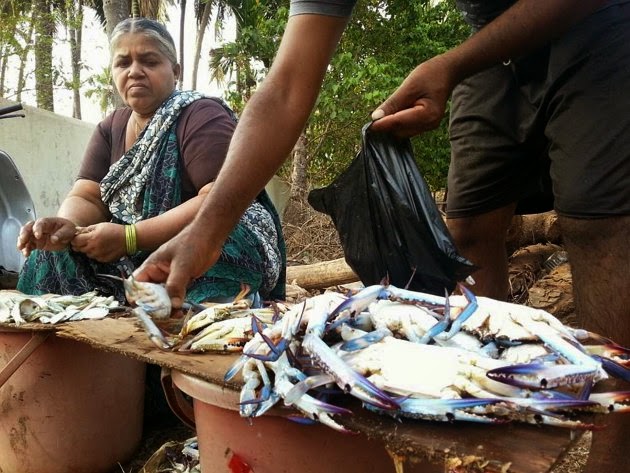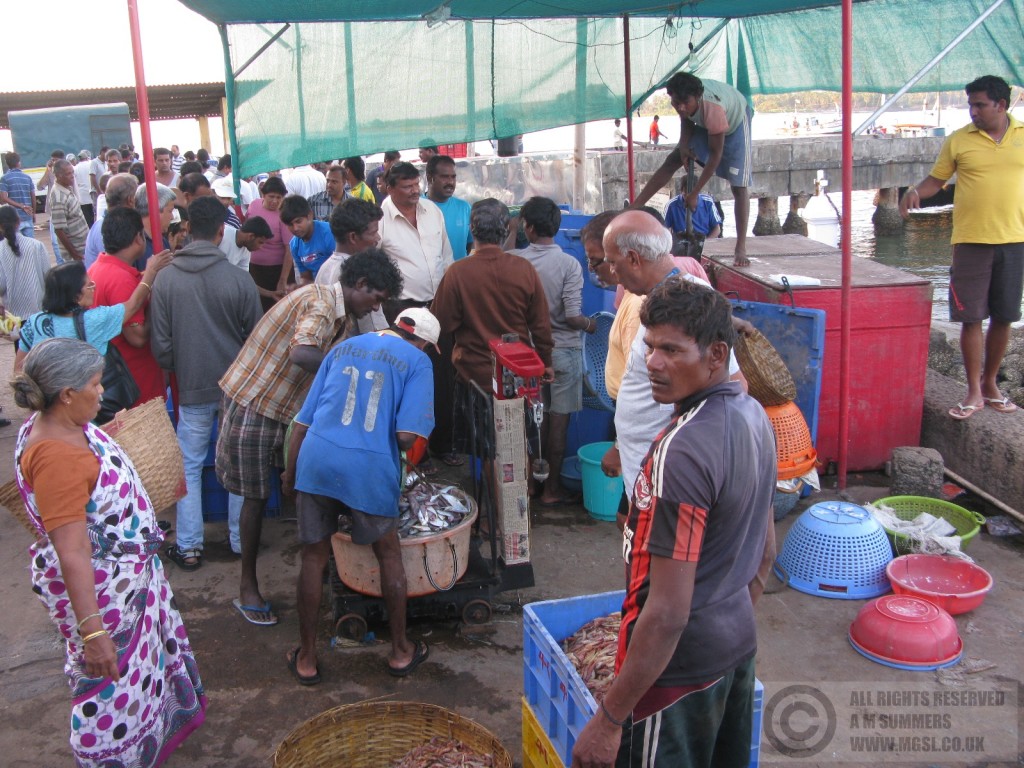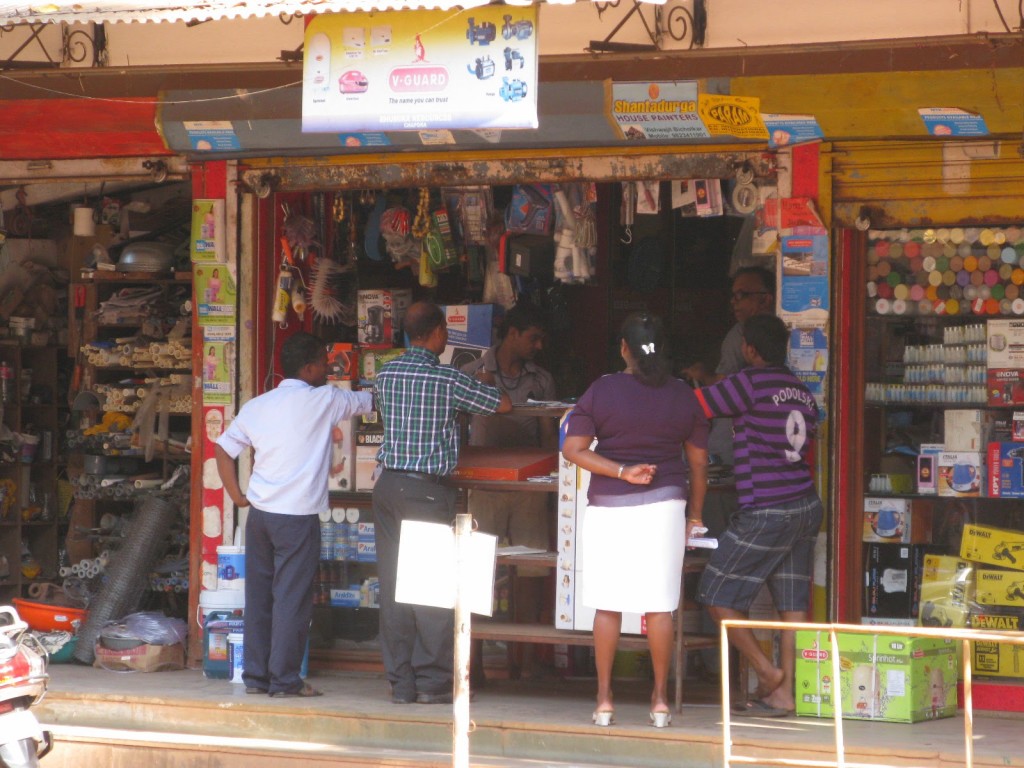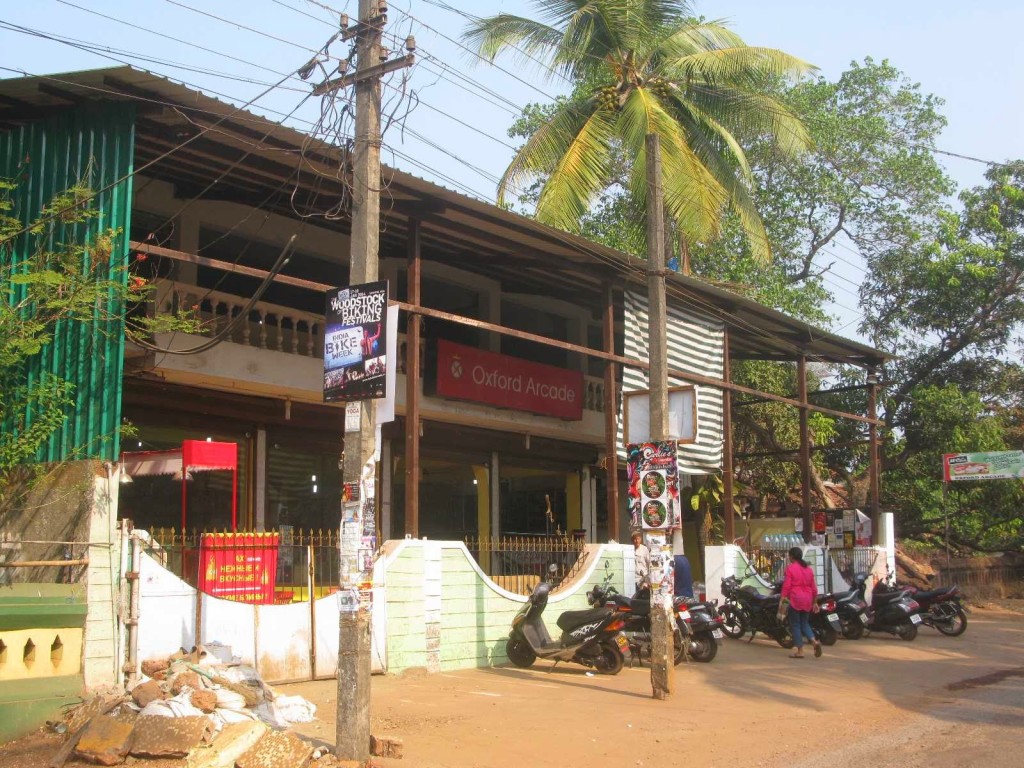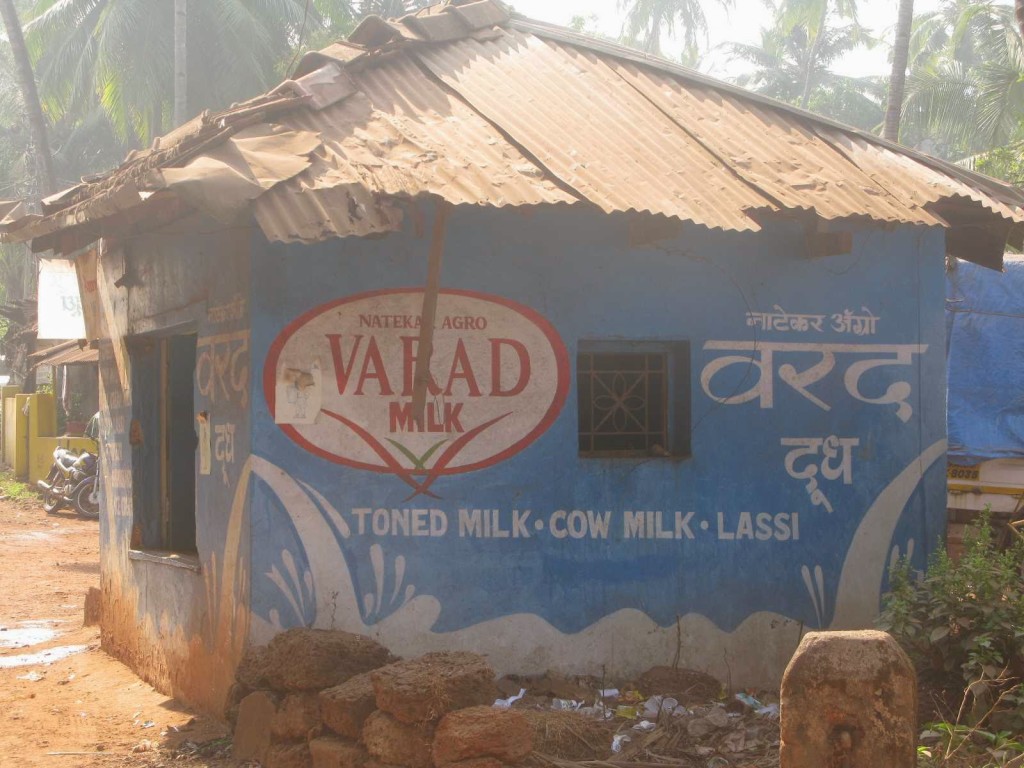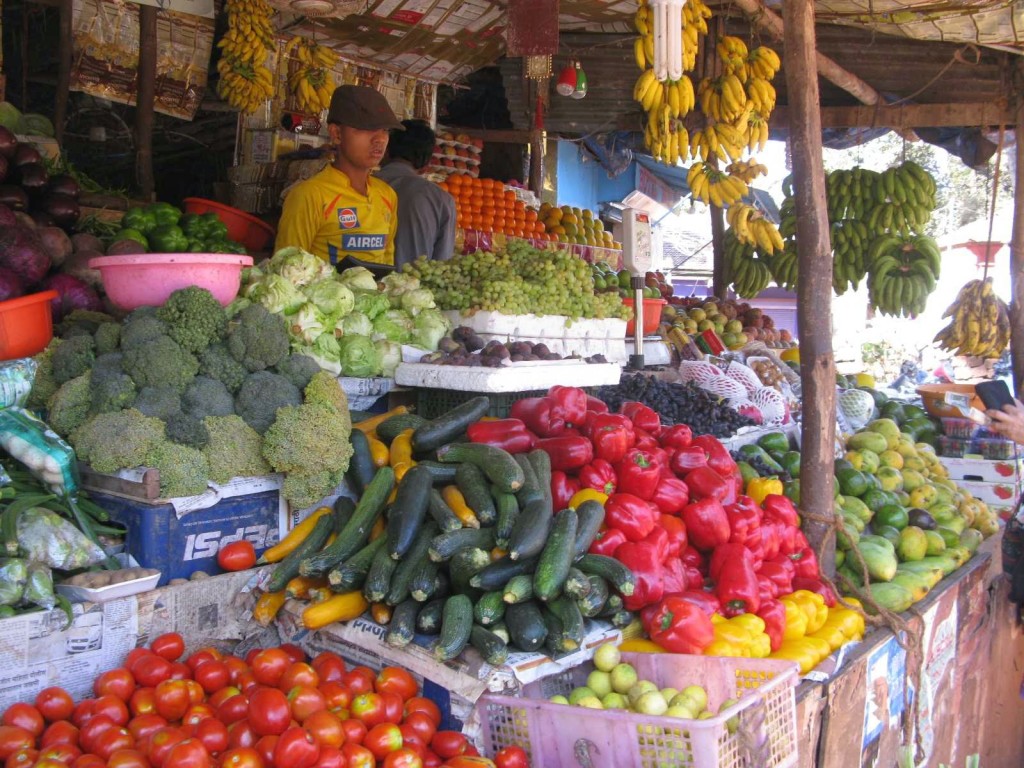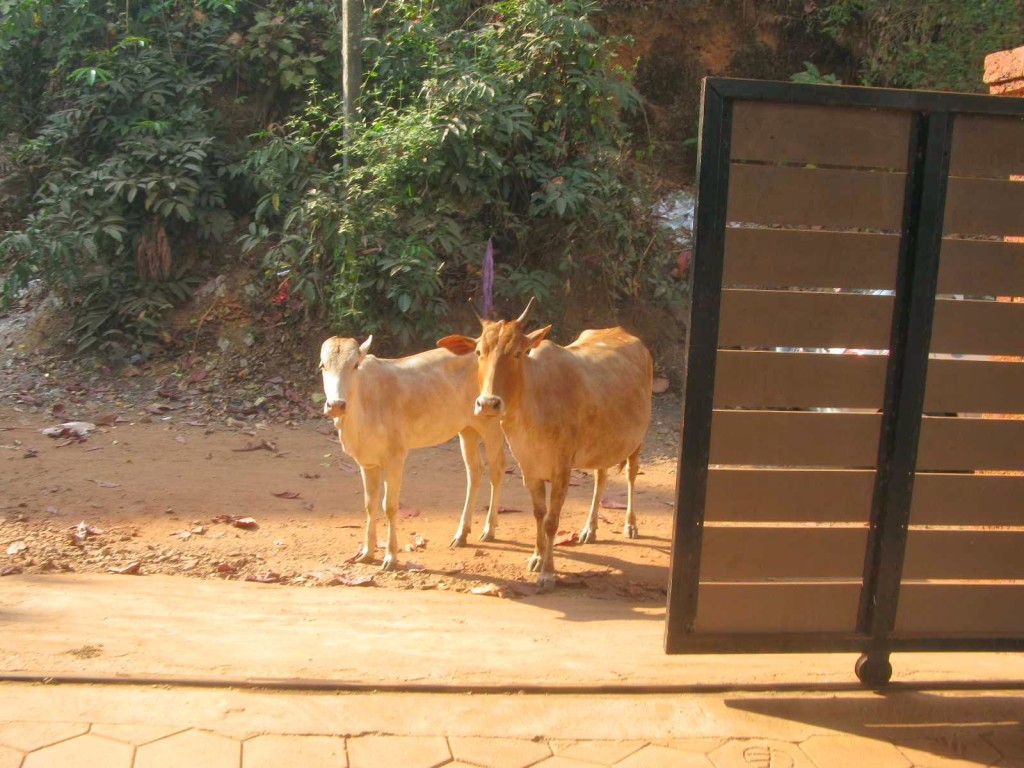You really feel like a resident, albeit a very temporary one, rather than a tourist when you have bought, gutted and filleted a large mackerel before 9am. I say ‘mackerel’ as that what the seller called it, but no mackerel I’ve encountered previously has had so many long, fine, bifurcating bones. I will not be buying it again.
I should probably go out earlier next time we want fish – by 8am the half dozen women, who squat on the patch of gravel opposite the vegetable stalls, have probably already sold the best of their wares. By 9:30 there will just be clams and a few small sardines, and by 11:00 the women will all have gone home. If we want fish after that it means a walk through the village and right down to the harbour at about 5pm, where the day catch is being unloaded. Most of it is loaded onto small trucks, packed in ice, but there are 3 or 4 stalls doing a brisk trade with locals and farangi who arrive on motorbikes. Mostly though it’s prawns, squid and very small fiddly fish. The larger fish are landed from the night boats at about 6:00am (except on Mondays, as the boats don’t go out on Sundays).
Buying food takes up a far greater proportion of our time than it does in the UK. Back home, I would get most of the week’s food in two visits to the supermarket, but that’s not possible here. For one thing we don’t have a car, so all the shopping is done on foot or by bus. Many long-stay foreigners in Goa buy or rent motorbikes as the most convenient way to get around, but I’ve never ridden a motorbike in my life and I don’t propose to start now – I’ve seen too many horrendous scrapes and abrasions on the limbs of tourists and, since nobody wears crash helmets, presumably there are plenty who don’t make it back to Chapora’s restaurants to show off their scars. So we’ll carry on lugging bottles of beer around in our rucksacks.
But transport is not the only issue. The concept of the one-stop shop is unknown here. You want paint and an electrical socket and a tap washer? That’ll be 3 different stores then – no B&Q here. Not only that, but the 3 stores will probably be located in different parts of town – the paint shop will be in Decorator Street, the electrical shop will line up with other electrical shops along Electrical Avenue, and of course you’ll need Plumbing Road for your tap washer.
Chapora is too small to have such specialised streets, but the hardware shop/ironmongers is on the way to the harbour while the paint store is through the village and up to the top of the hill. The same principle applies to food shopping. Yes, there are supermarkets – a small one in Chapora (kind of neighbourhood Co-op size) and the grandly named Oxford Arcade in Anjuna (possibly the largest in Goa, but think town-centre Sainsbury’s rather than edge of town Tesco Extra). Oxford Arcade has a good range of household goods upstairs (every size of bucket you can think of) and an extensive display of Himalayan Herbal ayurvedic pills and potions – but no fresh fruit, veg, meat or fish, even in prepackaged form. Our little Savitri store at the top of the hill in Chapora is similarly deficient – and the two fruit and veg stalls stand side by side in the opposite direction at the bottom of the hill by the morning fish market.
For milk and yoghurt, which come in 500ml plastic pouches, it’s necessary to call in to the dairy (supermarket yogurt in cartons is, unaccountably, 5 times the price) and eggs are best bought from the tiny hole-in-the-wall general store opposite the apartment block. Savitri does sell eggs but they don’t come in boxes, so carrying them back with the rest of the shopping is a precarious business.
There is a chicken store near the fish market but I haven’t ventured in – the produce may still be flapping around, and while I’m prepared to gut a fish, plucking a chicken is another matter. Fresh veg is bulky, so we can’t buy too much at once, especially since we have to keep almost all open food packages in the fridge – otherwise bread, for instance, quickly goes mouldy, and ants would get at the sugar. The supermarket does sell reasonable bread, but the best (along with croissants and tasty little savoury pastries) comes from an Indo-Italian bakery half way along the road to Vagator beach. So almost every day involves a visit to at least 3 different retail concerns, sometimes 5, unless we plan ahead very carefully.
There is little in the way of convenience food or ready meals. Long-life curries in foil pouches within slim cardboard boxes are available, but seem to be a recent innovation if the wonderment of our friendly Kashmiri shopkeeper in Varkala is anything to go by (he was astonished to learn that the exact same brand can be bought in Asian shops in the UK). Oxford Arcade has a few frozen ready-made items such as spring rolls (and once some surprisingly good McCain brand idly sambar that unfortunately they haven’t had since) but frozen veg is expensive.
We could eat out of course, but after three months of restaurant food morning, noon and night, we are still revelling in dining at home. So most of our meals are cooked from scratch, which is why I sit shelling peas and wondering how pea pods rate in the league of preferred cow fodder.
When we moved into this flat the owner said that we didn’t need to bother to segregate our waste, but it quickly became apparent that the consequence of not doing so was that one of the three ladies employed to clean the common areas of the block (they even mop the car park that occupies the ground floor!) had to sift through our yucky kitchen bin liners. It also meant that small bits of plastic etc. ended up in the cow bowl, so now all potential cow food is kept separate.
It’s a good system from a cow owner’s point of view – you just let it wander the streets all day finding its own food, and it makes its way home in the evening for milking. The bulls wander around too (fortunately the bulls are much better tempered than their British cousins) so in due course your cow will produce a calf. Cows in the UK may dine on lush green grass but Indian cows are less fussy and potato peelings, onion skins, orange peel and leftover noodles are all munched down. And it must be regarded as good stuff since early morning bovine visitors loiter by our gate, gazing expectantly into the courtyard – walk out there with melon skins and you will be mugged. I wonder whether they would actually find a diet of unrelieved grass boring.
It’s easy to be self righteous about the unsightly litter in India, but I wonder how people in the UK would cope with no municipal refuse collection – no ‘away’ into which to throw rubbish. The apartment block cleaners carefully segregate cardboard, plastic, glass and vegetable waste. The latter is placed in an old washing up bowl for the cows (although I suspect stray dogs also help themselves), the rest is sold for recycling. Whether the cleaners get the money as part of their remuneration package, I don’t know – I’ve wondered whether the beach cleaners in Patnem and street cleaners in Mumbai actually just work for the sale value of the refuse.
We don’t generate much glass since beer bottles are returnable (for a 5p discount on a full bottle), but there is a surprising amount of plastic even though we re-use the thin plastic bags we get from the veg stall, and take our own carrier bags to the supermarket. What can’t be recycled is swept into a pile and burnt. Small, smouldering bonfires by the roadside are ubiquitous here, and the air usually carries a whiff of acrid smoke.
But what else can people do? There do seem to be refuse collections from commercial premises in urban areas, but not around here. It’s just fortunate that the majority of Indian households generate nothing like the amount of garbage that we do in the UK, or the smoke would be a permanently thick pall.


